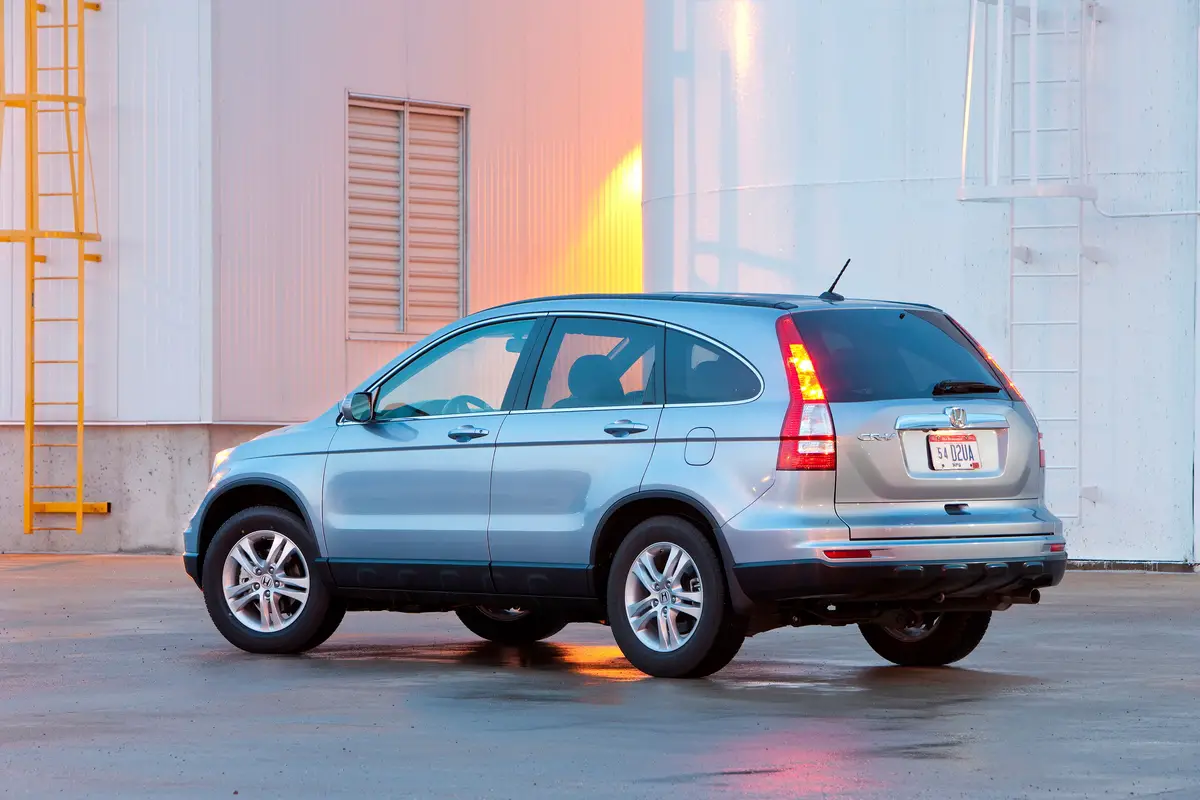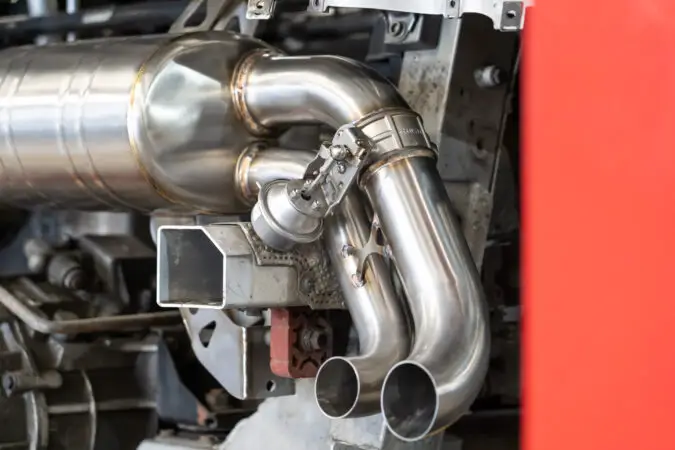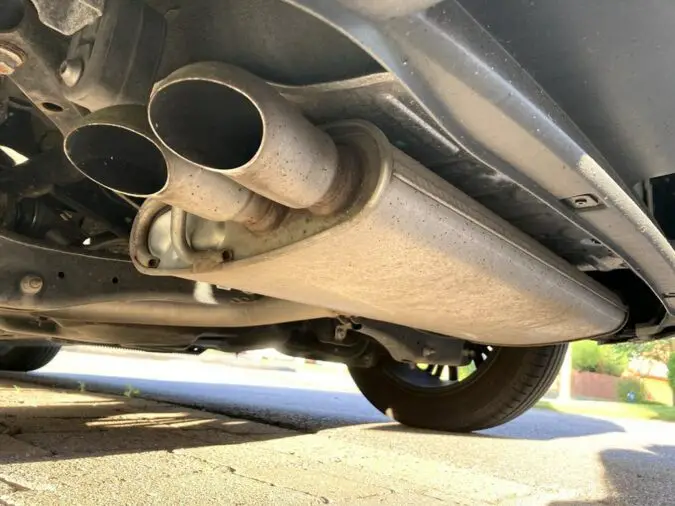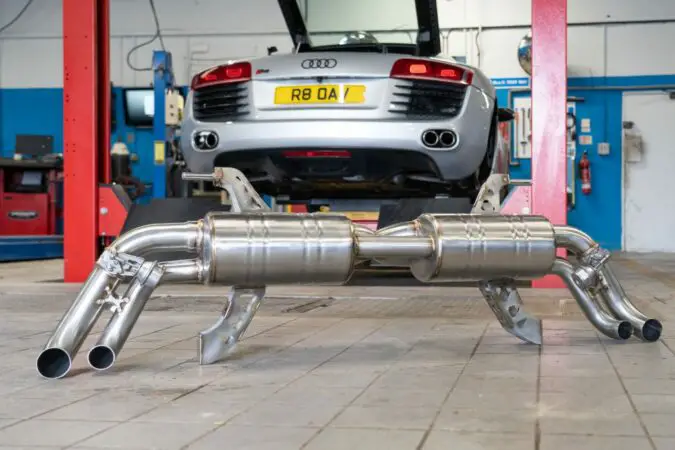Before they exit the car’s exhaust system, a catalytic converter changes the engine’s toxic exhaust gases into less dangerous ones. If you drive a Honda, you may be wondering about the Honda catalytic converter price.
The catalytic converter resembles a muffler in appearance. The standard housing features a stainless steel build and contains a honeycomb comprising of ceramic that is rich in platinum, palladium, and rhodium. These components assist in cleaning up dangerous exhaust gases that would otherwise come out of the tailpipe.
The many beds that make up the catalytic converter are divided into separate parts. Each one has particular catalyst components that support certain chemical reactions at temperatures of at least 400 degrees F. This changes the toxic HC, CO, and NO2 exhaust gases that are emitted from the vehicle’s exhaust pipe into less dangerous H2O, CO2, and N gases.
- Catalytic Converter Parts
- Catalytic Converter Price
- Fix Catalytic Converter
- Frequently Asked Questions
Catalytic Converter Parts
Petroleum is used to make the gasoline and diesel that power automobile engines. The majority of our petroleum is created when the remains of microscopic marine organisms rot down, heat up, and are compressed by layers of seabed rocks.
Because biological substances mostly comprise carbon and hydrogen atoms, petroleum comprises hydrocarbons which are molecules made of those atoms.
Theoretically, nothing but pure, relatively harmless carbon dioxide and water are produced when any type of hydrocarbon fuel is burned with oxygen from the air.
However, in reality, gasoline is a concoction of over 150 distinct compounds, including additives in addition to hydrocarbons, and it does not burn very cleanly. As a result, you often produce some air pollution.
The harmful gas carbon monoxide, as well as smog-causing nitrogen oxides and also volatile organic compounds (VOCs), are among the pollutants gases produced by automobile engines.
1. What Is A Catalytic Converter
The noxious molecules that makeup polluting gases are constructed from comparatively safe atoms. Therefore, if we could figure out a technique to divide up the molecules after they exit a car’s engine but before they are pushed into the air, we could solve the pollution problem—or at least some of it.
A catalytic converter handles that task.
These devices are easier to use than they appear. A catalyst is just a substance that speeds up a chemical reaction without altering itself. To learn more, check out our explainer on what’s in a catalytic converter and what is inside a catalytic converter.
The catalyst’s role in a catalytic converter is to expedite the removal of pollution. Platinum or metal that resembles platinum, such as palladium or rhodium, creates the catalyst. To find out more, check out our write-up on what’s a catalytic converter.
A catalytic converter is a sizable metal box with two pipes coming out of it that is fastened to the underneath of your car.
One of these, the converter’s input, is attached to the engine and draws hot, contaminated gases from the engine’s cylinders into the converter where the fuel burns and produces power. The converter’s output, the second pipe, is attached to the exhaust pipe.
Chemical reactions occur on the catalyst’s surface as the engine exhaust gases pass over it, dissolving the polluting gases into other gases that can be released into the atmosphere without harm.
It’s crucial to remember that catalytic converters require unleaded fuel since conventional fuel’s lead poisons the catalyst and inhibits it from removing pollutants from exhaust fumes.
2. What Takes Place Within The Converter
Inside the converter, the gases pass through a tightly packed ceramic honeycomb structure that is covered in catalysts. The gases are transformed more quickly and effectively because of the honeycomb structure (to learn more, check out our guide on what do catalytic converters do and what does a catalytic converter do), which allows them to contact a larger area of catalyst at once.
On the one hand, that tightly packed structure can sometimes lead to a clogged catalytic converter. A catalytic converter typically contains two main types of catalysts:
One of them uses a chemical procedure called reduction to combat nitrogen oxide pollution. This transforms nitrogen oxides into gases such as nitrogen and oxygen.
The alternative catalyst converts carbon monoxide into carbon dioxide through an opposing chemical reaction known as oxidation (adding oxygen).
Unburned hydrocarbons in the exhaust undergo another oxidation cycle, converting them to carbon dioxide and water.
In reality, three distinct chemical processes are occurring simultaneously. We discuss three-way catalytic converters for this reason. Two-way catalytic converters are some less efficient converters that only perform the second and third oxidation processes.
When the catalyst has completed its task, the exhaust primarily contains nitrogen, oxygen, carbon dioxide, and water (in the form of steam).
3. How Well Do Catalytic Converters Work
Catalytic converters significantly reduce tailpipe emissions, with three-way converters providing a sizable additional advantage over two-way converters:
But occasionally people wonder if they really are as green as they appear to be. It’s crucial to keep in mind that they just lower emissions, not get rid of them entirely.
One issue is that, when the engine has had time to warm up, they only actually function at high temperatures (about around 300°C/600°F).
Early catalytic converters were inefficient for the first few miles of a trip because they typically needed 10 to 15 minutes to warm up or any part of a very short journey. Even while modern converters warm up in just two to three minutes, during this time, there can still be considerable emissions.
Whether they raise greenhouse gas emissions is another question. Since carbon dioxide is not hazardous at normal amounts, we consider it to be a safe gas.
However, given that it is the main contributor to climate change and global warming, it isn’t wholly harmless. Some people think that because catalytic converters shift carbon monoxide into carbon dioxide, they exacerbate climate change.
In reality, a catalytic converter has no effect on the amount of carbon monoxide your car produces because it would eventually turn into carbon dioxide in the atmosphere on its own. Instead, it merely lowers the amount of carbon monoxide a car releases into the air as it drives, thereby improving the quality of the local air.
But vehicle engineers and environmentalists have long noted another important issue when it comes to climate change.
Despite the fact that cats primarily convert nitrogen oxides into nitrogen and oxygen, they also occasionally release nitrous oxide (N2O), a greenhouse gas with a global warming potential over 300 times greater than carbon dioxide.
4. Mechanism Of A Catalytic Converter
Prior to the invention of catalytic converters, waste gases from the automobile engine found their way into the atmosphere directly through the exhaust tailpipe.
The catalytic converter, which is located between the engine and the exhaust pipe, doesn’t simply act as a filter; rather, it modifies the chemical makeup of the exhaust gases via the rearrangement of the atoms that make them up.
Polluting gas molecules pass through a platinum, palladium, or rhodium honeycomb catalyst as they exit the engine. Some performance cars even have high flow catalytic converters to limit restrictions and ensure an easier flow.
The catalyst breaks down molecules into their constituent atoms.
Following their recombination, the atoms form molecules of comparatively safe chemicals like carbon dioxide, nitrogen, and water, which then safely come out through the exhaust.
5. Do Diesel Engine Catalytic Converters Work?
Pollution makes up only a minuscule 1% of the emissions from diesel engines.
With hydrocarbons, carbon monoxide, as well as sulfur dioxide making up only a small portion of that one percent, the majority of that one percent comprises nitrogen oxides and particulates.
Catalytic converters are also part of diesel engines, however, there are some significant changes from how they function in gasoline engines.
Diesels use two-way oxidation catalysts, which solely address carbon monoxide and hydrocarbons, in place of three-way catalysts since diesel exhausts are substantially cooler than gasoline exhausts.
Diesel engines emit far more nitrogen oxides from their tailpipes than gasoline engines because they lack reduction catalysts.
Diesel engine catalytic converters do, albeit inadvertently, assist in reducing particle emissions (mostly soot); in particular, they target a particular kind of particulate known as the soluble organic fraction, SOF, generated from hydrocarbons bonded to soot.
The usage of diesel particulate filters (DPFs) is required to significantly reduce the soot emissions from an engine.
Aside from cars, diesel engines typically power substantially larger vehicles than gasoline engines such as large construction equipment, with a significantly higher exhaust output.
To handle the greater exhaust gas volume, they can have several separate units installed in sequence in place of a single catalytic converter between the engine and the tailpipe.
Honda Accord Catalytic Converter
The cost to replace catalytic converters for Honda Accords typically costs between $2,319 and $2,466, as per data from RepairPal.
The cost of labor is normally between $97 and $122, while the cost of parts is between $2,222 and $2,344.
Between $2,529 and $2,554 is the typical Honda catalytic converter price range for a Honda Accord catalytic converter replacement (just like a typical Volvo catalytic converter, and once you’ve found a good catalytic converter replacement shop near me and where to find a good catalytic converter near me).
Between $88 and $111 is the cost of labor, while between $2,441 and $2,443 is the cost of parts. This might vary depending on where you get a catalytic converter repair near me.
Honda CRV Catalytic Converter Location
A catalytic converter, often known as a “cat”, is standard on your Honda CRV. It’s a crucial part of your car’s exhaust system.
Without one, poisonous vapors may infiltrate your cabin and make you and your passengers ill.
Additionally, not having a cat converter can lead to emissions violations and environmental pollution. Simply put, your car needs one.
Sadly, thieves want the metals found with catalytic converters since they are in high demand on the illicit market. Owning a Honda vehicle, such as a Honda CR-V, makes you an easy target.
So, where is the catalytic converter?
Depending on the model year you drive, the position of the catalytic converter may change (to learn more, check out our explainer on the Ram 1500 catalytic converter location and how many catalytic converters are in a Dodge Avenger). It is often between the engine and the muffler on the bottom of your SUV as part of the exhaust system.
You can attach your catalytic converter either through bolting or welding. For more insight, also check out our guide on what is a muffler on a car.
Honda Accord Catalytic Converter Theft
One of the most often targeted makes and models of catalytic converter theft (given how valuable they are) in the US is Honda Accords (maybe, the best catalytic converter anti-theft device or a catalytic converter cover or an F-150 catalytic converter protector might help, and knowing the signs of missing catalytic converter).
It’s not difficult to keep your Accord safe from thieves who want the catalytic converter, but you must take action right away because more Honda Accord owners are experiencing catalytic converter theft than ever before (to learn more, check out our guide on how to know if your catalytic converter is stolen, and how to know if catalytic converter is stolen, as well as the F-150 catalytic converter anti-theft).
One of the most well-liked vehicles on the road is the Honda Accord. The Accord is a favorite target, just like the majority of Honda car models.
The catalytic converter can be quickly and easily removed by thieves by sliding beneath the vehicle. With a battery-powered saw, skilled catalytic converter thieves may remove one in as little as 30 seconds.
The fact that thieves are aware that Honda catalytic converters have higher amounts of precious metals, including Platinum, Rhodium, as well as Palladium in the catalytic converters, even more so in Honda’s hybrid models, is another factor contributing to the Honda Accord’s popularity as a target for catalytic converter thieves.
Thieves might make more money at resale than with other car types due to the higher percentage of precious metals (check out our explainer on the catalytic converter precious metal prices and why are catalytic converters stolen, as well as learning how to stop catalytic converter theft).
So, here are some quick and handy tips for preventing catalytic converter theft (such as installing a DIY catalytic converter protection – especially if you’re worried about the catalytic converter theft in Texas and catalytic converter theft prevention, as well as the most common catalytic converters stolen):
- Install theft-deterrent catalytic converters.
- You can paint or etch your catalytic converter.
Catalytic Converter Price
Have you been wondering about the Honda catalytic converter price? How much is a catalytic converter? Replacement costs for catalytic converters vary drastically. The primary distinction between a direct fit and a general fit unit is this.
A muffler shop may simply install a generic replacement converter for $200-$300 for many automobiles. To do this, you’ll need to begin by removing the old catalytic converter from the exhaust section and welding a new one in its place.
A direct-fit catalytic converter is the sole choice in many recent vehicles since the converter is frequently built into the exhaust manifold directly or into a complex down-pipe portion from the engine.
Direct-fit converters are often bolt-on components that must be removed in order to be replaced, then a new component must be bolted in place. They are frequently much more expensive compared to their universal equivalents since they are more complex.
Depending on the vehicle model, a replacement for direct-fit alternatives can cost anywhere between $300 and $2,500 simply for the part. Additionally, keep in mind that installing the converter may cost from $70 to $130 per hour of work. The time needed to complete the task will change depending on the particular vehicle used.
Even while you will save money on labor if you perform the work yourself, the catalytic converter itself is sometimes the most expensive part of the project. Even while the task can be time-consuming, it’s frequently not too challenging, especially if you purchase a direct replacement catalytic converter (just like you would with a 2012 Infiniti QX56 catalytic converter replacement or a Jeep Commander catalytic converter).
Cheapest Way To Fix Catalytic Converter
There are many options available to you when you consider fixing your catalytic converter. Catalytic converters could be flushed out, cleaned, or, if they are fully damaged, replaced. So, be wary of any tell-tale signs of a bad catalytic converter (and knowing the catalytic converter life expectancy and how to diagnose a code P0420).
Honda Catalytic Converter Price, Fixes #1: Cleaning It (Without Having To Remove)
To get rid of the smell, put some gasoline in a container and apply a catalytic converter cleaner (even using lacquer thinner). The majority of the cleaners are only compatible with gasoline or diesel engines, while others are. With both types of engines, some cleansers are effective.
Ensure that the gasoline tank in your car has at least 15 liters of gas. Then, fill the gas tank with the cleaner according to the suggested amount, and start the vehicle.
Now is the time to get in the car and go! Every time you drive, a tiny quantity of catalytic converter cleaners will disperse and clean the exhaust system of your vehicle. Keep in mind that cleaner labels will specify how far you should travel for the greatest outcomes.
After cleaning their vehicles, drivers should go for around 30 minutes or till the gas tank is empty, whichever comes first. But watch out for overheating of your engine.
How To Remove And Clean The Catalytic Converter
- If the code is still present, you can take the catalytic converter apart, remove it, and thoroughly clean it.
- After parking your automobile on a flat surface, you should switch it off and give it some time to cool.
- Use hydraulic jacks to raise the catalytic converter. Support the vehicle also by the jack stands.
- Utilizing an oxygen sensor wrench, move the oxygen sensor away.
- When you connect the converter to the exhaust system and maintain it there, apply some penetrating oil to the bolts.
- Examine the converter after removing it. Be certain to shake it, but if you do, purchase a new one straight soon if it rattles loudly. If there is minimal to no rattle, you should do the cleaning first.
Cleaning Up
To get rid of dirt and debris, you need to clean both the inside and outside of the catalytic converter. That should help you unblock a catalytic converter.
Power cleaning is an effective way to do this.
- Blend the degreaser with hot water. After that, submerge your converter for one to two hours.
- Drain and wash with other water. Allow it to air dry.
- Reinstalling the converter and oxygen sensor is necessary.
- Drive the vehicle and check the code.
Do It Yourself
You can also save money by replacing the catalytic converter yourself, which is another option to fix a catalytic converter (without needing to replace it).
Nevertheless, you still need to purchase an appropriate catalytic converter for your vehicle, which can cost anywhere between $400 and $2000 or over, depending on the brand and model of your vehicle. You can utilize this in this situation if the catalytic converter is faulty and beyond repair.
Let’s consider the following things to assist you to understand what is happening before we examine how you can alter or change the catalytic converter yourself and save money.
What does a typical catalytic converter repair cost? If you replace your catalytic converter, do you also need to replace your oxygen sensor? Should I replace my catalytic converter?
How much does a catalytic converter repair cost on average?
You could expect to pay between $950 and $2500 for the typical fix. The cost of this item includes both the parts and the labor.
Honda Catalytic Converter Price, Fixes #2: Replace A Catalytic Converter
If you use only a few hand tools as well as jack stands to complete the task yourself, consider how much money you’ll save.
To do it yourself, you’ll need the following:
- wrench measuring 17 mm.
- a wire bristle brush
- a jack
- two stands
Now let’s find out how to perform a DIY catalytic converter replacement (as you would with a 2012 Nissan Sentra catalytic converter replacement)
Step 1. Lift And Secure The Car
Setting the parking brake is simple. After then, stop the wheels and elevate the vehicle. Make sure the jack stands are supporting the weight.
Remember that depending on the repair, you could have to entirely lift your automobile off the ground.
Step 2. Unbolt Both The Front As Well As Rear Flange Bolts
It’s crucial to make sure you unscrew the five bolts connecting the front as well as back flanges when using your wrench and ratchet. After unbolting, you can remove it and move it.
Avoid rusty bolts since they may be difficult to remove. This indicates that cutting may need the use of a saw or hacksaw. note that sometimes breaking rusty bolts to remove them is possible. Simply tighten them till they separate if you wish to.
Step 3. Simply Clean The Mounting Points’ Surface
On the front as well as back mounting surfaces, there will be a lot of rust and grime. Therefore, you can remove any additional material that has accumulated by using a wire brush. When you finish this, the surface is ready for fresh seals.
Step 4. Put In Fresh Catalytic Converter Seals
Now all you need to do is replace the catalytic converter’s seals.
Step 5. Install The Fresh Bolts And Springs
On the front as well as back flanges, fasten the five screws. Use brand-new hardware, please. Between the flange as well as the washer are the springs located on the front flange. To prevent it from leaking, they apply a significant amount of tension to your exhaust. Ensure the five screws are snug before releasing the jack stands.
Keep in mind that fresh exhaust seals frequently emit a little amount of smoke when turned on. If you notice a few little vapor specks, it won’t be a major concern.
FAQs On Honda Catalytic Converter Price
If you’re still curious to learn more about the Honda catalytic converter price, our FAQs here might help…
How Much To Replace Catalytic Converter
It costs cash to change a catalytic converter. The repairs on a catalytic converter will typically cost from $945 to $2475 for most automobiles, components inclusive of labor. The catalytic converter may cost upwards of $2250 on its own. That may be comparable to the price of your car.
How Much Is A Honda Catalytic Converter Worth
Between $1,432 and $1,461 is the typical price range for a Honda catalytic converter price and replacement. $103 to $130 is the expected cost of labor, while $1,329 to $1,331 is the projected cost of parts.
How Much Is A Honda CRV Catalytic Converter Worth
Replacement catalytic converters for Honda CR-Vs typically cost from $2,090 and $2,379. While components cost from $1,967 to $2,225, labor is predicted to cost between $123 and $155.





